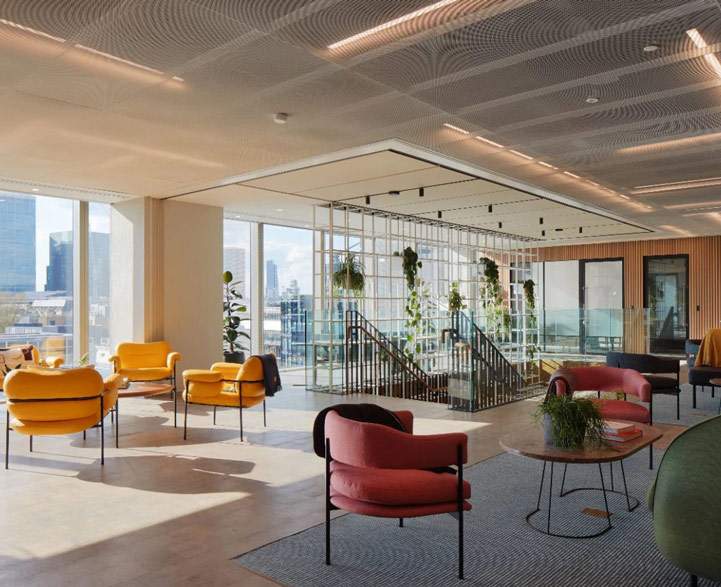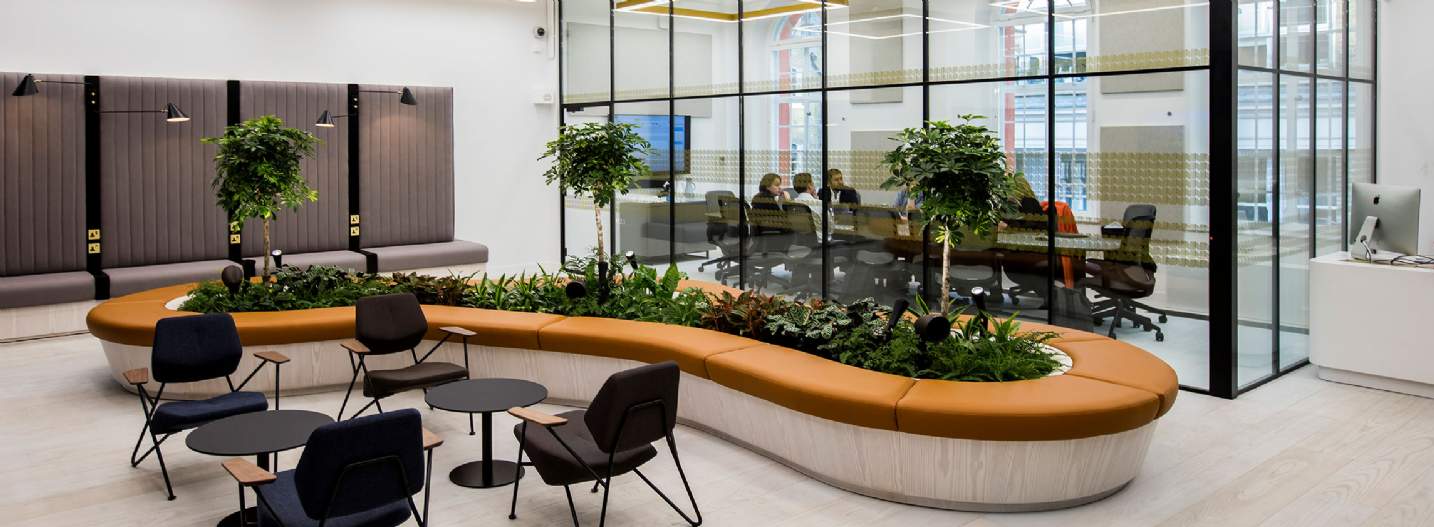What are landlords' views on the future of flexible office space?
Introduction
Welcome to Savills Landlord Flex Survey 2023.
The survey was undertaken in October 2023 and gauges the views and attitudes of landlords towards the flexible workspace sector. There were 33 responses to the survey from landlords who owned, in total, 89 million sq ft of space. The type of property owners varied from funds/asset managers, REITs, property companies and private landlords, providing different perspectives on the flexible workspace sector. We will compare our 2023 results against our surveys conducted in 2022 and 2020 to understand whether perspectives have changed over the last three years.
The flexible office market has benefitted from the ongoing desire for greater flexibility from tenants as well as higher demand for readily available space for amenity-rich buildings. This trend was highlighted in Workthere’s UK H1 2023 Flexible Office Market Snapshot, where operators have reported strong occupancy and desk rate growth. The average price per private office desk in the UK H1 2023 was up 15% on the first half of last year and surpasses the desk price, pre-Covid, by 30%. UK enquiries are up 12% YoY, which is an increase of 173% on pre-Covid levels, and providers have reported that this year, occupancy levels in London are at 88%, while the rest of the UK’s contract occupancy was at 86%.
Take-up from operators has been gradually recovering since the Covid-19 pandemic. At the end of Q3 2023, there was 641,000 sq ft acquired by operators, with 78% of the take-up concentrated in Central London
Simon Preece – Associate Director, Commercial Research
WeWork’s troubles are not reflective of wider operator sentiment. The increase in demand for flexible office space has resulted in an uptick in requirements for new sites from operators. The demand is predominantly focused in London or the Big Six regional cities.
Take-up from operators has been gradually recovering since the Covid-19 pandemic. At the end of Q3 2023, there was 641,000 sq ft acquired by operators, with 78% of the take-up concentrated in Central London.
Demand from flexible office operators has recovered faster in Central London when compared to the Greater London & South East and Regional Cities market areas. Take-up in Central London in 2023 has already surpassed the annual totals recorded in the three previous years and has increased incrementally each year since the start of the Covid-19 pandemic.
The lack of suitable sites has hampered certain operators’ expansion plans outside of Central London. Operators are often seeking to locate in prime best-in-class buildings, with the undersupply of this type of product persisting in the regional markets.
The Landlord Survey Results
Landlords' appetite to operate their own flexible workspace has weakened
The appetite for landlords to operate their own flexible workspace has fallen when compared to the last two surveys, with 58% of respondents having no interest, which was the highest proportion of all three surveys undertaken. Creating a successful flexible office space requires expertise and significant resource, which can be challenging for landlords who do not often have the scale to make this viable.
This is reflected in the proportion of landlords having no appetite to operate their own workspace increasing in each survey undertaken. Therefore, there is an increasing number of landlords seeking to partner with operators to provide flexible office space in their buildings. This bodes well for operators seeking to expand their portfolio over the next few years.
Landlords are more optimistic on the long-term prospects for the sector
Optimism towards the flexible office sector from landlords has improved with 52% of respondents optimistic on the long-term prospects for the sector. This proportion was above the 2022 Landlord Flex Survey where 46% of respondents were optimistic.
There is a growing trend of landlords recognising flexible office space as a part of the amenity offering in a building which can help support the letting performance of a scheme. Furthermore, there are an increasing number of corporate occupiers who will only consider buildings which provide this offering when relocating amidst the greater demand for tenant flexibility.
Flexibility of lease terms and customer profile
The continued positive sentiment towards flexible office space from landlords can be partly attributed to the increased demand for lease flexibility, with 67% of respondents expecting tenants to require more flexible lease terms going forward. This was marginally below the 72% proportion recorded in 2022. This trend has resulted in the appetite for landlords to lease space to flexible office operators rising. 30% of landlords were more in favour of having operators as tenants when compared to six months ago, with only 12% less in favour which was the lowest proportion when compared to the two previous surveys.
A consequence of the ongoing desire for more flexibility and service from tenants is the change in the size of occupiers who have been leasing flexible office space. In the 2022 survey, the most common size requirement was between 500–2,500 sq ft, accounting for 73% of responses from landlords. This has increased to 2,500 sq ft + in the 2023 survey, with 41% of landlords stating this was the typical flex size unit. Interestingly, 13% of landlords stated it was over 5,000 sq ft, highlighting the increasing demand for flexibility from larger tenants and a move towards managed products.
The war for talent has intensified in a post-Covid environment, and occupiers are mindful of providing multiple amenities to their staff when they come to the office. Flexible workspace can help encourage collaboration and provide a variety of different amenities, including restaurants and private bars. This has resulted in an increasingly diversified customer base for flexible workspace, with corporate occupiers incorporating a growing quantum of flex space into their real estate portfolios.
The economic headwinds currently present in the market have also resulted in the number of occupiers seeking both flexible and landlord fitted office space increasing. Rising fit-out and finance costs, combined with delayed development completion dates, have made these options more appealing as they help mitigate these risks and can increase flexibility and convenience for the occupier.

MYO - Liverpool Street
How much space for the flexible offering?
The inclination of landlords to let larger quantities of space to flex operators has increased in the latest survey. 31% of landlords were willing to let more than 25% of the building to an operator in a hypothetical building of over 50,000 sq ft, whereas this was 10% in 2022.
Landlords were, however, more comfortable letting smaller quantities of space, with 10–25% and less than 10% having the highest quantum at 34% and 35%, respectively. This trend is reflected in the average letting size to a flexible office operator since the start of 2021, totalling 21,000 sq ft.
Management agreements
There has been a growing trend of landlords willing to explore management agreements with operators. This was reflected in the survey, with 54% of landlords either neutral or open to considering a management agreement with a flex operator, which was marginally above the 53% proportion from the 2022 survey. This highlighted the willingness of landlords to explore this deal structure, which allows for greater input from the landlord when compared to a traditional lease. The improving sentiment from landlords towards management agreements is notable when reviewing the proportion who are definitely not open – this was 3% in the 2023 survey, whereas it was 21% in the 2020 survey.
The greater market acceptance of management agreements was evident, with 36% of landlords more likely to consider a management agreement when compared to six months ago, with only 6% less likely. At the end of Q1–Q3 2023, 45% of flexible office operator transactions were on a management agreement basis, which was the highest proportion ever recorded – in 2019, only 9% of deals involved this deal structure, highlighting the changing market sentiment.
Key points
What are the top five takeaways from this survey?
- The importance of flexible workspace continues to be recognised by landlords, with 58% of respondents considering flexible office operators as important or nice to have as tenants in a building.
Sentiment towards operators from landlords has improved, with 30% of landlords more in favour of having operators as tenants when compared to six months ago, with only 12% less in favour, which was the lowest proportion when compared to the two previous surveys. - There has been an increase in the typical flexible-sized unit let to occupiers. In the 2022 survey, 73% of responses stated the most common-sized flexible requirement was 500–2,500 sq ft. Whereas in the 2023 survey, this increased to 2,500 sq ft +, with 41% of landlords stating this was the typical flex size requirement. There are an increasing number of corporate occupiers seeking to add flexible workspace into their portfolios.
- There was a weaker appetite from landlords to create their own flexible workspace, with 58% of respondents having no interest, which was the highest proportion of all the three surveys undertaken.
- Landlords continue to be most comfortable with letting smaller quantities of space to flexible operators with 10–25% and less than 10% of a hypothetical 50,000 sq ft building having the highest quantum at 34% and 35%, respectively.
There has, however, been an increase in the appetite to let a higher proportion of a building to a flexible operator, with 31% of landlords willing to let more than 25% of the building to an operator in a hypothetical building of over 50,000 sq ft, whereas this was 10% in 2022. - Management agreements as a deal structure continue to be more frequently adopted by landlords, with 54% of landlords either neutral or open to considering a management agreement with a flex operator, which was marginally above the 53% proportion from the 2022 survey.

Great Portland Estates - 166 Piccadilly
FURTHER INFORMATION
